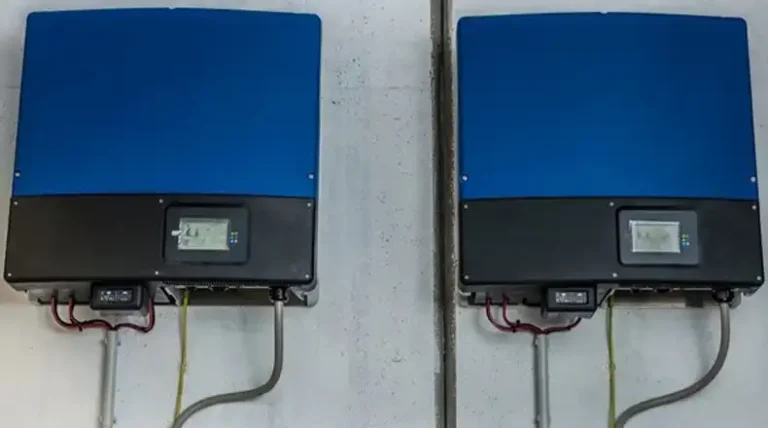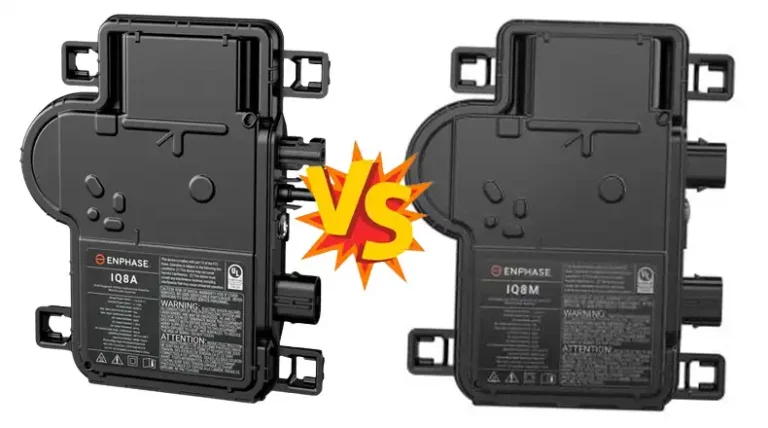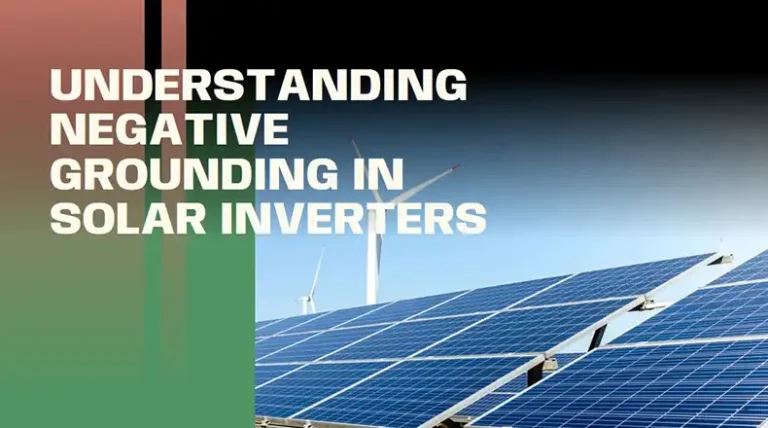What Is a Hybrid Solar Inverter?
A hybrid solar inverter is an advanced power management device at the center of complete solar-plus-storage solutions. Hybrid inverters interface between solar panels, batteries, and the utility grid to optimize renewable energy usage and storage for homes and businesses. They build upon standard inverter technology and add critical capabilities for maximizing solar self-consumption along with seamless system mode switching.
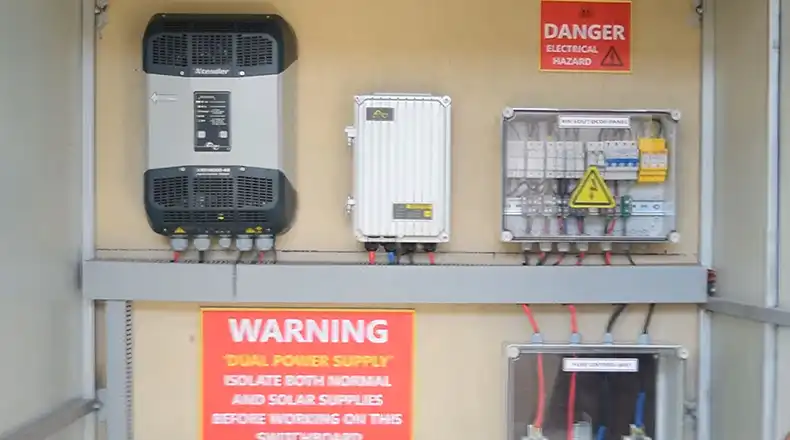
What Is the Functionality of Hybrid Solar Inverter?
While traditional inverters simply convert solar DC electricity into usable AC power, hybrid inverters unlock the full potential of integrated solar and battery systems. Their specialized functions span –
a) Efficiently inverting DC from solar panels into AC electricity
b) Providing multiple operational modes: on-grid, off-grid, backup power
c) Charging batteries from solar for off-grid usage and storing excess production
d) Intelligently managing power flows between sources and loads
e) Automatically switching between grid, solar, and batteries
In essence, hybrid solar inverters are sophisticated energy management systems that reduce grid dependence while saving money. They minimize wasted solar energy through smart battery coordination and provide resilience during grid outages.
How Do Hybrid Solar Inverters Work?
Hybrid inverters utilize maximum power point tracking to optimize the DC power output of connected solar panels. This harvested DC solar electricity then charges batteries or is inverted directly to AC power as needed.
Any excess solar energy not immediately consumed powers the battery bank, which stores this energy for future use. Batteries integration also allows off-grid functionality during grid outages alongside emergency backup capability.
Finally, hybrid inverters dynamically manage the various power sources – grids, solar, and battery – to determine the ideal energy mix at any given time based on availability, pricing, and load demands. This multi-mode management and seamless switching enhances resiliency and self-consumption.
Types of Hybrid Solar Inverters
There are three primary classifications of hybrid inverters.
Grid-tied hybrids interface solar and battery into grid infrastructure with no off-grid mode. They maximize solar self-supply but rely on the grid for supplemental needs and excess solar exports. Ideal for grid-connected net metering homes to maximize savings.
Off-grid hybrids necessitate battery-based energy storage and operate detached from the utility grid. Well-suited for remote sites without grid access but requires properly sized battery banks.
Backup hybrids combine grid and off-grid modes plus uninterrupted emergency power during grid failures. This robust capability provides energy resilience but at increased costs for the integrated batteries and large inverter capacity.
Each hybrid type has advantages particular to certain use cases. Evaluate your needs to aid in selecting the optimal system design and inverter.
Pros and Cons of Using a Hybrid Solar Inverter
Hybrid solar inverters present several key advantages over standard inverter options:
Energy Savings
Increased solar utilization directly and charging batteries slashes utility bills. Smart meters enable tracking production and consumption.
Resilience
Backup systems keep critical loads operational through automatic switching and off-grid solar capabilities when the grid goes down.
Flexibility
Modular batteries let storage capacity expand over time as needs evolve or more funds become available.
Monitoring
Internet-connected hybrid inverters provide rich energy usage analytics and alerts, and some allow remote control.
Compatibility
Accommodate both AC- and DC-coupled system architectures depending on battery location preference – AC or DC-coupled.
Tradeoffs of using hybrid inverters include:
- More expensive upfront capital investment
- Added layers of complexity with integrated batteries
- Potential single point of failure risk
- Requires an internet connection for monitoring and control functions
- Proper sizing and installation expertise are critical
The advanced capabilities unlock immense potential value, from energy cost reductions to outage protection. But validating the benefits over standard inverter offerings for your situation is key before committing to a hybrid system.
How Does a Hybrid Inverter Compare to Other Inverter Types?
Standard String Inverters simply convert DC solar power into AC electricity. They offer the most basic functionality at the lowest costs but lack integrated battery storage or intelligent energy management capabilities.
Microinverters situate the DC-AC inversion process at the individual solar panel level. This addresses some shading issues but omits battery integration. Also locks you into one vendor’s panel technology.
Battery Inverters incorporate basic battery charging and control modes for basic backup needs during grid outages. But lacks the sophisticated solar self-consumption and optimization algorithms of hybrid inverters.
So while standard current and next-generation inverters serve more basic requirements, only hybrid inverters provide the complete spectrum of advanced features for maximum solar-powered resilience and grid independence.
Why Hybrids Are Best for Off-Grid Living?
Hybrid solar inverters truly shine for remote, off-grid properties. Reasons they excel in standalone applications include:
a) Battery-coupling – Energy storage intrinsic to sustain operations absent a grid.
b) Advanced algorithms – REbus and backup modes intelligently juggle resources.
c) Larger capacities – Run high loads like pumps, motors, or EV chargers.
d) Weather resilience – Persist through prolonged overcasts and storms.
e) Multi-day autonomy – Carefully sized batteries carry critical loads for days without sunlight.
No competing solar technology yet equals hybrid inverters for establishing fully independent and reliable off-grid solar systems. Their integrated battery coordination, smart power balancing capabilities, and flexible operation empower making a 100% solar-based living reality.
That’s why for remote living, rural properties, and resilient homesteads, hybrid solar inverters are ideal for establishing robust and reliable off-grid solar energy systems.
How to Choose the Perfect Hybrid Inverter?
With hybrid solar inverters spanning a wide spectrum of sizes, features, and pricing, it’s critical to choose the properly matched system for your unique context and budget. Therefore, you need to focus on these particular factors:
Power Output
Right size for both typical and essential backup loads, plus expected future increases.
Operating Mode
Will grid-tie, off-grid, or backup capacities be necessary?
Battery Compatibility
Storage capacity should mirror multi-day critical load needs.
Efficiency Rating
>96% optimal, directly impacting solar harvesting yields.
Monitoring
Select models with apps, dashboards, and analytics.
Warranty Coverage
10-15-year hardware warranties should match the expected system lifespan.
Leverage solar experts to tailor hybrid system specifications perfectly for your application parameters. A custom-optimized design maximizes the value of these more complex integrations.
Installing and Maintaining Hybrid Inverters
Realizing hybrid inverter benefits necessitates proper installation and occasional maintenance. Physically mounting requires an adequate wiring gauge for the high loads, a dedicated overcurrent circuit breaker, and lightning/surge suppression. Commissioning also includes configuring software settings, testing modes, and integrating batteries plus ancillary components.
Post-activation maintenance is fairly minimal, limited to checking error logs, performing software updates, and occasionally confirming batteries are cycling properly. Diagnosing issues can be complex with more points of failure across the integrated system. But generally, hybrid inverters reliably perform for years absent intervention when initially deployed correctly.
Cost Comparison: Hybrid vs. Battery Inverters
Hybrid solar inverters demand premium investments, with costs ranging from $3,000-$10,000 compared to simpler string inverters averaging $1,500 or less. You also must budget for accompanying battery banks, which can easily double or triple the overall system pricing.
However, stacking incentives plus deeply reduced or eliminated electric bills ultimately furnish favorable long-term paybacks. Grid independence, energy resiliency, and maximum solar utilization advantages further bolster ROI arguments as solar plus battery economics continue strengthening. The higher initial outlay brings game-changing technology capabilities that affirm hybrid solar inverters as cornerstones of tomorrow’s smart energy ecosystems.
Short Questions and Answers
What size hybrid inverter do I need?
Match your typical and critical load power consumption needs. A 4-8kW unit suits most homes seeking full backup capabilities.
Do I still need a charge controller?
No. The advanced hybrid inverter includes integrated MPPT tracking and battery charging regulation, eliminating the need for a separate charge controller.
Can a hybrid inverter power my whole house?
Yes, provided your typical and maximum load demand is within the inverter’s capacity. Large loads may require soft starts or smart scheduling.
Is a hybrid or battery inverter better?
Hybrid inverters allow greater flexibility and control compared to basic battery-enabled inverters. The advanced hybrid management capabilities justify costs.
Final Thought
Hybrid solar inverters offer unrivaled functionality spanning grid interactivity, off-grid solar optimization, backup power, and intuitive energy management. Although premium investments, hybrids maximize solar utilization and battery integration making them preferential for resilience, sustainability, and minimizing energy costs. With solar expanding globally, hybrid inverters will increasingly emerge as linchpins bridging green energy production, storage, and consumption.

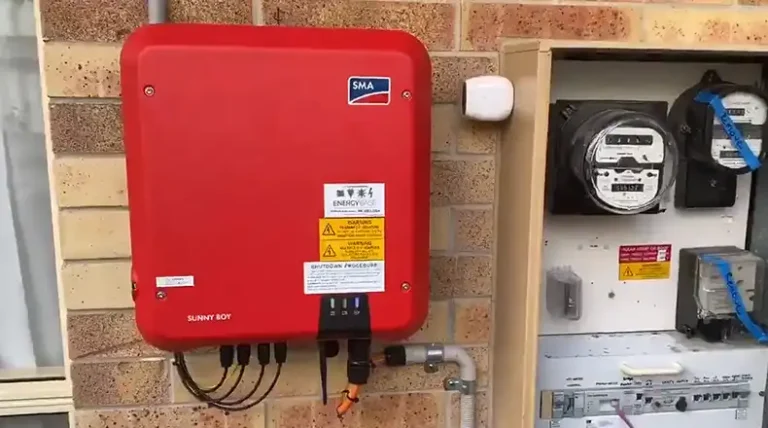
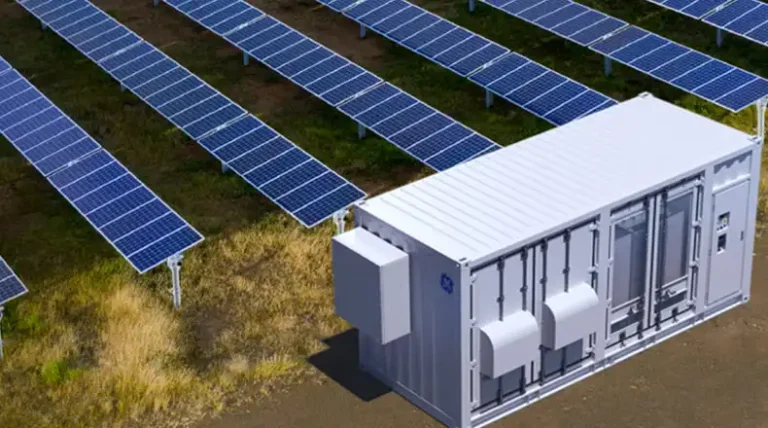
![What Size Inverter Do I Need for a Refrigerator? [Answerd]](https://www.itekenergy.com/wp-content/uploads/2024/04/What-Size-Inverter-Do-I-Need-for-a-Refrigerator-768x428.webp)
